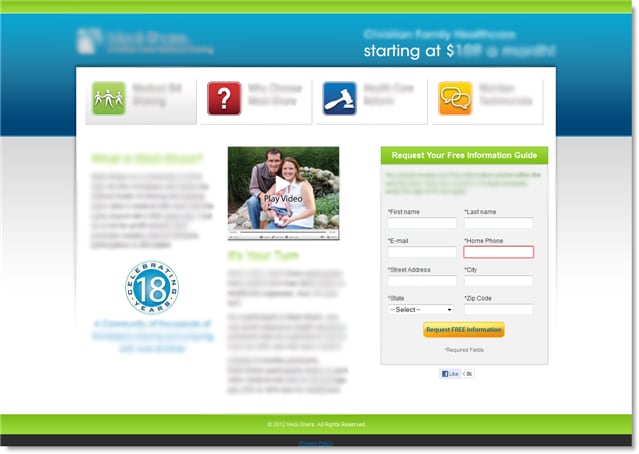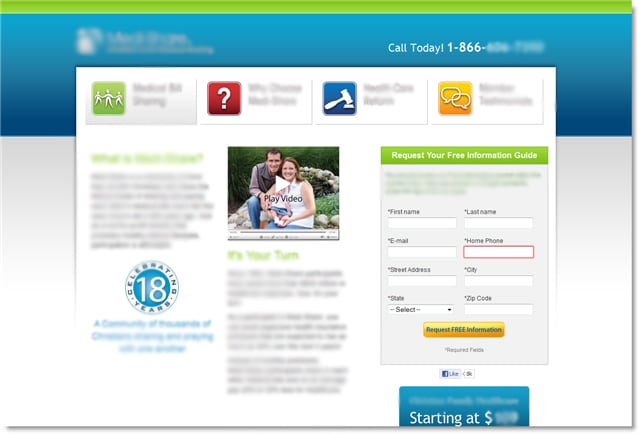In this landing page test, we wanted see if we could increase leads for our paid search client, a medical sharing provider, by adding a tracking phone number to an alternate landing page. This would also have the effect of reducing their cost-per-lead (CPL).
The normally visible portion of the original page
The normally visible portion of the test page
We figured there was an excellent chance for a win: While the vast majority of internet users are now comfortable entering their contact information for an information request, some still aren’t. Our assumption was this might be particularly true in regard to something personal, like a health plan. We realized there was a chance form submissions might be to some degree cannibalized by calls, but logic pointed squarely to an overall (submissions plus calls) lead increase. (We also calculated the possible slight drop could be mitigated by the added credibility enhancer of the number.)
Well, we were wrong.
We weren’t incorrect about overall leads, and the resulting CPL, which jumped by about 35%, and fell by about 16%, respectively.
We were off about submissions
Not only did form submissions not go down, the conversion rate for the “number” landing page was about 21% higher than the rate for the original page.
In order to make room for the phone number, we had to move the chunk of text describing the plan’s low costs, which we placed at the bottom of the page. We created a bubble with a blue gradient similar to the one on top for it, so as to keep the text-to-background contrast.
This had three consequences:
- The low-cost feature became even more prominent than before, as you also had the bubble-against-page contrast now, in addition to the text-to-background contrast.
- The cost feature was then almost right at point of decision for the visitor. You’re about to fill out the form—maybe not?—and wow, those are some savings!
- The submission conversion rate rose. A lot.
Sometimes we’re more clever than we think.





